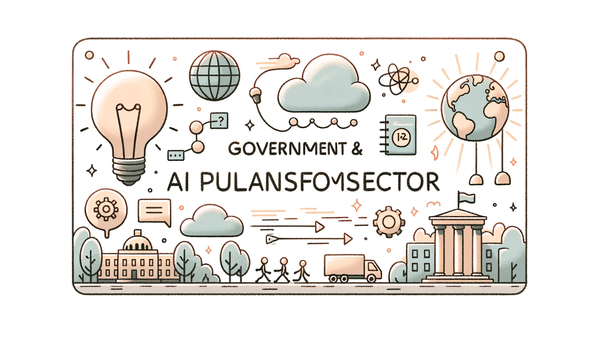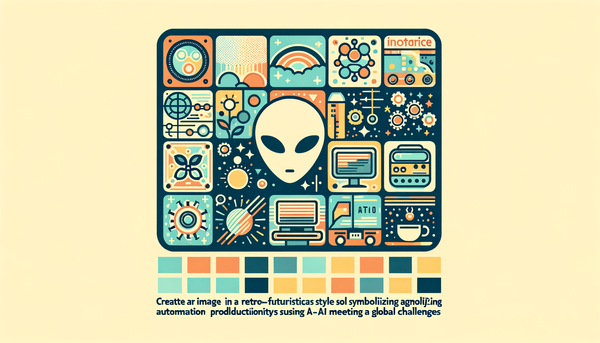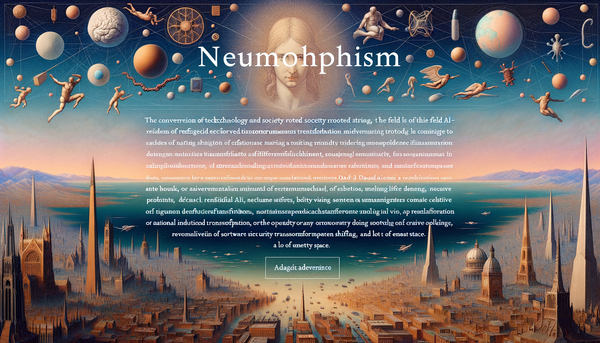AI Chatbots as Counselors: Innovations and Challenges

HBCUs challenging the status quo in education, Microsoft urging global competitiveness in an AI-savvy era, and innovative startups introducing smart glasses and high-performance smartphones collectively serve as powerful reminders that the subtle nuances of AI can both redefine our future and demand greater consideration for long-term resilience over short-term expediency.
Revolutionizing Education: HBCUs and the AI Transformation
Historically underrepresented institutions are now emerging as hotbeds of innovation. HBCUs have long been bastions of culture and resilience, and today they are strategically leveraging the power of artificial intelligence to innovate in education. Far from the common assumption that AI is predominantly about automation in large corporations, these institutions have turned AI into a tool for empowerment, modernizing curricula and transforming student experiences.
The integration of AI in HBCUs provides a multifaceted benefit that ranges from personalized learning algorithms to predictive analytics that help improve student retention. It is striking to note that while many educational institutions rely on traditional methods, an emerging approach involves harnessing AI not as a replacement for the human touch, but as a complement to better address the diverse learning needs of students.
My recent deep dive into how these institutions are using technology reminds me of the transformation documented by AI.Biz on AI Education and Industry Transformations. What transpires in the classrooms of HBCUs is not merely an upgrade in technology, but an embodiment of innovation that allows educators to blend traditional pedagogy with emerging digital tools.
"The development of full artificial intelligence could spell the end of the human race." – Stephen Hawking, from Brief Answers to the Big Questions
This quote, although cautionary, contrasts the thoughtful and strategic approaches taken by educators at HBCUs. Rather than succumbing to the dystopian views of AI, these institutions are capitalizing on AI-driven adaptive learning platforms, customized student support systems, and collaborative research projects to forge a brighter, more inclusive future.
In a Global AI-Savvy Environment: Standing Out in an Era of Rapid Innovation
On another front, global reports emphasize the necessity for everyone—from startups to multinational corporations—to develop strategies that allow them to stand out in an increasingly AI-driven world. The insights shared by Microsoft in its report on thriving in an AI-savvy environment underscore the importance of continuously evolving personal and organizational skill sets while reinforcing core values.
It is evident that as AI becomes pervasive, the competitive advantage will not simply rest on the adoption of technology, but rather on how effectively it is integrated with human intuition and skill. This sentiment echoes in various sectors, particularly as AI begins to democratize tools that were once available only to large enterprises. The emergence of user-friendly AI platforms has ushered in a sea change, and aligning these innovations with ethical and sustainable practices is critical.
In a professional context, these developments encourage organizations to foster an ecosystem that facilitates continuous learning. For those interested in understanding the broader impact of AI on everyday life, I recommend exploring our discussion on how artificial intelligence is reshaping routine interactions.
The Hidden Trade-Offs: Long-Term Resilience versus Short-Term Efficiency
There is an ongoing debate in technology circles about the hidden costs of AI. An insightful piece from Big Think raises critical questions on how the pursuit of immediate efficiency could lead to compromised long-term resilience. In a luxury-driven tech landscape, businesses often opt for quick gains without fully considering the larger implications of their strategic choices.
This observation is particularly striking when contrasted with approaches where technology is used as an enabler for sustainable growth. Sometimes, projects or initiatives that promise immediate benefits end up sacrificing the potential to build robust systems capable of weathering unforeseen challenges. The emphasis on short-term value can obscure important ethical considerations and strategic planning that are central to the sustainable adoption of AI.
For instance, rapid deployment of AI solutions without due diligence may overlook long-term vulnerabilities. I recall a discussion on this very topic in a recent detailed analysis that cautioned organizations to evaluate the full spectrum of costs associated with AI-driven innovation. In the relentless pursuit of efficiency, the subtle risks of security, data privacy, and adaptability often go undetected until major issues arise.
"Any AI smart enough to pass a Turing test is smart enough to know to fail it." – Ian McDonald, River of Gods
This paradox resonates deeply with the balancing act between immediate performance gains and enduring technological infrastructure. Reflecting upon these insights, it is reassuring to see initiatives such as those being reported by AI.Biz on preparing students for their AI future that stress the importance of long-term planning in the integration of advanced technologies.
Elevating Network Efficiencies: Advancing AI for RAN
One of the less publicized battlefronts in the AI revolution is the integration of AI into network infrastructure. The collaboration between Keysight, Samsung, and NVIDIA clearly highlights the tangible benefits of using AI for Radio Access Networks (RAN). This technological leap, documented in Business Wire, showcases how AI can be harnessed to optimize network performance, boost coverage, and reduce energy consumption.
The idea behind AI-for-RAN technology is fundamentally about merging real-time analytics and automated decision-making into the core of network operations. While earlier networks continuously struggled to modulate performance in dynamically changing environments, an AI-enhanced RAN system can predict traffic surges, dynamically allocate resources, and even preemptively manage network failures.
What excites me is the prospect of such technology not only enhancing service quality but also driving down operational costs for mobile network operators. A comprehensive study published by industry experts showcased how AI technology is streamlining network maintenance and management, underscoring the potential for far-reaching improvements in connectivity. Moreover, it’s a clear illustration of how meticulously crafted collaborations can pave the way for breakthrough innovations in telecommunications.
For additional context on how AI is being applied across diverse sectors, the article on AI Innovations transforming industries and education sheds light on similar disruptive technologies, offering a broader perspective on the integration of AI in both core and auxiliary sectors.
Embracing Innovation in Consumer Technology: TECNO’s Smart Devices and AI Applications
Consumer technology is also witnessing dramatic transformations driven by AI-enabled innovations. TECNO's recent launch of the Camon 40 series at MWC 2025 encapsulates this shift. With cutting-edge features powered by the MediaTek Dimensity 8350 Ultimate chip, the Camon 40 Premier 5G is setting a benchmark with its suite of AI-driven photography enhancements, including a 50MP Sony LYT-701 sensor and innovative FlashSnap technology.
The Camon 40 series represents a confluence of creativity, technology, and aesthetic appeal. The trio of cameras—ultrawide, periscope telephoto, and a primary 50MP sensor—combined with advanced features like Universal Tone technology for superior skin tone reproduction, exemplify how AI augments our everyday devices. The reported durability, with IP68 and IP69 ratings, along with strong battery life, also point to a seamless user experience driven by efficient AI integration.
Moreover, the unveiling of TECNO’s AI smart glasses hints at the rapid convergence of wearable technology with everyday consumer gadgets. With an integrated 50MP camera and an in-built Ella AI assistant capable of language translation and object recognition, these glasses are not just a novelty but a robust tool designed for dynamic, on-the-go usage. The potential applications range from augmented reality assistance, real-time navigation to even immersive media consumption, setting a new standard in consumer electronics.
This innovative step is yet another reminder that AI is not just confined to theoretical or enterprise-level applications. Instead, it is penetrating the consumer market, altering the way we interact with technology on a daily basis. The seamless integration of sophisticated AI features into devices that are both affordable and accessible is a trend that will likely spur further advancements in the tech arena. Interested readers might also enjoy following our coverage on emerging consumer technologies in our ongoing segment about the potential everyday impacts of AI.
Addressing Social Challenges: AI Chatbots in Education Counseling
As artificial intelligence continues to forge new paths, its role in education extends far beyond classroom instruction, touching even the corridors of student counseling. The shortage of high school counselors has long been a pressing concern, and innovative AI chatbots are now emerging as a supplemental tool to bridge that gap. However, like any new technology, AI chatbots in this space have sparked debates regarding their potential impact on students.
While proponents argue that AI chatbots can ensure round-the-clock access to support, providing advice and preliminary counseling, critics caution that such tools might inadvertently reduce invaluable human interactions that are critical to student well-being. The dichotomy here rests on an important question: Can technology truly replicate the empathetic nuances and complex emotional support that experienced counselors bring to the table?
Incorporating AI into educational counseling should not be viewed as a substitute for human guidance but rather as a complementary solution. The success of these chatbots depends largely on careful calibration and the informed involvement of experts to ensure ethical guidelines are followed. Anecdotally, some districts that have piloted these systems report increased efficiency in handling routine queries, thereby allowing professional counselors to concentrate on more nuanced cases.
This dual approach of leveraging both AI tools and human expertise is emblematic of a broader trend discussed extensively on preparing students for their AI future. Ultimately, the integration of AI chatbots in educational counseling could serve as a critical bridge, provided that ongoing evaluations ensure they adhere to standards that prioritize student care over mere efficiency.
Integrating AI in Telecommunications: Enhancing Efficiency and Performance
Delving further into technical applications, the advancements in AI-for-RAN driven by collaborations among industry leaders such as Keysight, Samsung, and NVIDIA demonstrate the turning tide in telecommunications. This initiative is geared toward leveraging AI to create a more agile, data-responsive network infrastructure, ensuring not only enhanced performance but also significant reductions in latency and energy consumption.
Telecommunications, often regarded as the nervous system of our digital age, is being revolutionized by these AI-enhanced networks. Strategic partnerships like these are critical as they combine robust hardware solutions with sophisticated software, creating networks that can dynamically respond to varying load demands. The intelligence infused into these networks is expected to play a pivotal role in the evolution of 5G and beyond.
Academic and industry experts have noted that such technical integrations may set the stage for new, unforeseen efficiencies. As these networks become more predictive, operators can preempt potential congestion and deliver superior service quality, which in turn can lead to more reliable communication channels for both business and personal use. The potential impact on emerging technologies—such as autonomous vehicles, IoT, and smart cities—is profound, and it begs the question: how far can we push the boundaries of AI in practical, everyday applications?
Bridging the Past and Future: Reflections on AI’s Evolving Journey
Reflecting on the journey of AI brings a sense of both awe and responsibility. From early computational experiments to today's highly integrated systems powering smart devices and dynamic networks, the evolution of AI underscores the interplay between technological innovation and societal impact. As we witness AI’s growing footprint in education, telecommunications, consumer products, and even social services like student counseling, it becomes clear that the technology's trajectory is as complex as it is promising.
The common thread in these narratives is the pursuit of balance—achieving immediate enhancements without losing sight of longevity and ethical considerations. Whether it is HBCUs setting a precedent in educational innovation, Microsoft emphasizing global competitiveness, or the intricate trade-offs detailed by Big Think, we find that the true potential of AI lies in its responsible application. As many experts have suggested, the path forward is less about replacing human oversight and more about augmenting our innate capabilities with smart, efficient algorithms.
It is interesting to reflect on how history embraces change. Much like the industrial revolutions of the past, which transformed societies beyond mere mechanization, AI is challenging us to reimagine our future with a focus on sustainable progress. Moreover, this evolution offers a multitude of opportunities for cross-sector advancements. As noted in our recent coverage on AI innovations transforming industries and education, we are on the brink of an era where the fusion of digital intelligence with human creativity becomes the cornerstone of progress.
"Any AI smart enough to pass a Turing test is smart enough to know to fail it." – Ian McDonald, River of Gods
This quip, delivered with characteristic wit, serves as a reminder that even as we push the boundaries of what technology can achieve, prudence and thoughtful regulation remain essential. As we continue to ride the wave of AI's evolution, it is crucial for stakeholders—from educators and policymakers to tech innovators—to engage in robust dialogue, informed debates, and collaborative ventures that ensure technology serves as a force for good.
Looking Forward: The Convergence of Innovation and Responsibility
At its core, the landscape of artificial intelligence presents a rich tapestry of opportunities and challenges. The push for market efficiency, consumer convenience, and network performance must be measured against the imperatives of long-term resilience and ethical stewardship. Future developments will likely require us to adopt a hybrid approach, wherein technology complements human expertise rather than supplants it.
In educational settings, for instance, teachers augmented by AI tools can provide highly personalized learning environments that cater to diverse student needs. Similarly, in telecommunications, network systems that incorporate AI can offer greater reliability and efficiency, potentially revolutionizing how we connect and communicate. Meanwhile, consumer tech innovations, as seen in the TECNO Camon 40 series and AI smart glasses, are poised to offer novel experiences that bridge the gap between digital and physical realities.
The underlying message in all these discourse fragments is clear: the future of AI is not a monolithic entity defined by rapid algorithms or isolated applications. Instead, it is a confluence of multiple narratives—each shaped by distinct stakeholders yet inherently interconnected by the shared ambition to improve human life. For those eager to delve deeper into the multifaceted aspects of AI, our extensive series on AI education, industry transformations, challenges, and trends provides a broader context for these exciting developments.
As someone who has witnessed firsthand the gradual yet transformative impact of AI, I am convinced that our journey is just beginning. The stories of HBCUs revitalizing education, global leaders advocating for digital agility, innovative startups pushing the envelope on consumer technology, and deep technical collaborations fortifying network infrastructures collectively signal that AI's role in shaping our future is both profound and inevitable.
Maintaining this balanced approach requires clear-eyed insights, collaborative innovation, and informed decision-making. The intersection of technology and human values is delicate, and every new breakthrough carries the dual potential for great benefit or unintended consequence. As we continue to explore and integrate AI technologies in every sphere of life, let us remember that responsibility, transparency, and foresight are critical components for fostering a future where innovation uplifts humanity without eroding its core principles.
Further Readings and Resources
For readers looking for more in-depth discussions, here are some recommended resources:
- AI Innovations Transforming Industries and Education – Explore how AI is reshaping multiple sectors.
- Transforming Education with AI: Challenges and Trends – A closer look at educational transformations powered by technology.
- Preparing Students for Their AI Future – Understand the intersection of traditional education and futuristic technologies.
- Evaluating AI’s Potential Impact on Everyday Life – Insights into how AI is affecting daily routines and consumer behaviors.




